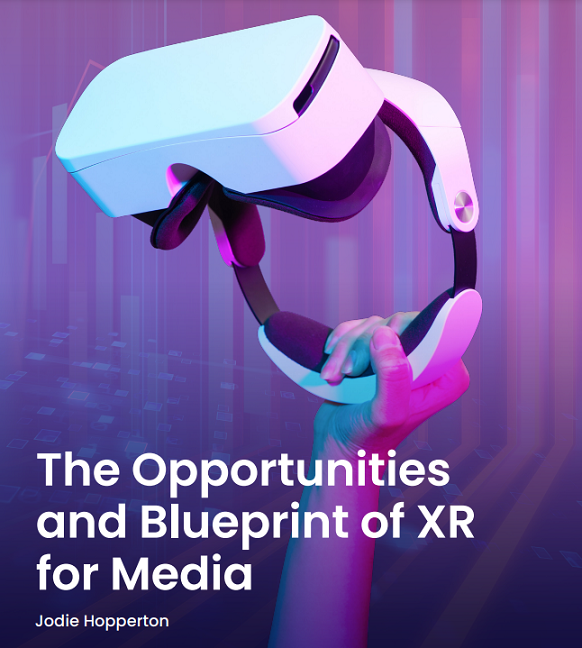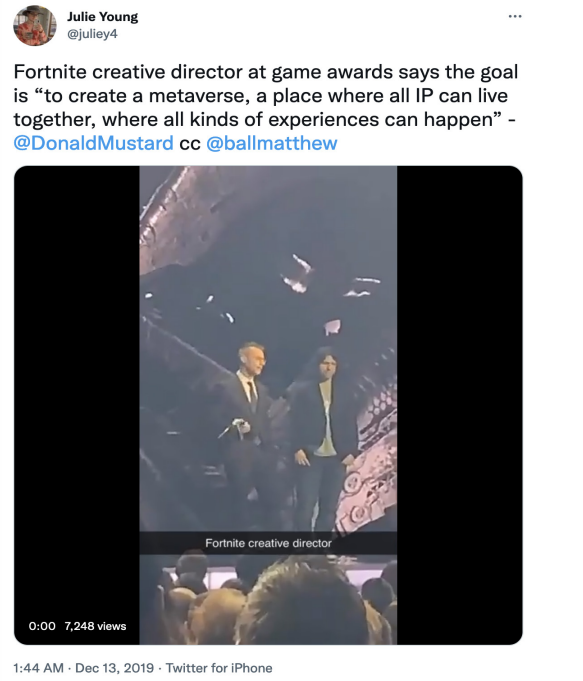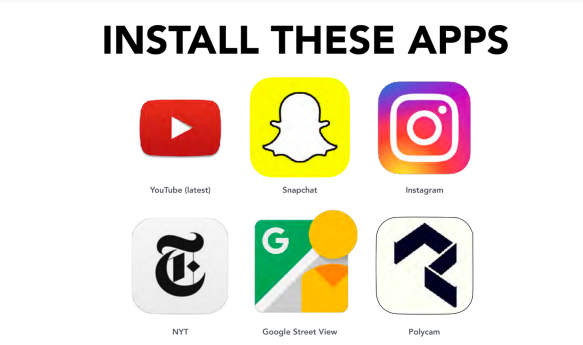
Remember when it seemed Virtual Reality (VR) and Augmented Reality (AR) were just around the corner? Then they weren’t?
Well, it’s finally happening, but this time, it’s labelled XR — Extended Reality. Apple and Microsoft are working on headsets that will be more user-friendly than the clunky ones we remember from the last decade. And Facebook changed its name to Meta for a reason.
The next phase of the Internet is coming. And news media companies need to prepare.
During a series of six master classes, INMA, partnering with Meta, dug into the nitty gritty of XR.
In “The Opportunities and Blueprint of XR for Media,” we share what we learned during the sessions:
XR’s specific benefits and opportunities as related to the news media industry.
How to explain XR to readers.
Specific tools media companies can use that cost less than an iPhone in some cases.
Why media companies should give platforms like Snapchat another look.
And yet, with all of this, publishers must remember the story matters more than the platform.
One big takeaway: All this technology is much more affordable these days. During the master class, presenters spent a lot of time on what AR brings to news. Zillah Watson, who has created award-winning content for the BBC, said AR is going to transform the way we navigate the world. She also shared her thoughts on VR.
One key learning: VR headsets are still a hassle for users. So VR content must be spectacular to be worth the effort.
Watson also spoke of the ethical considerations of XR. The platforms can be so real, a journey to a particularly impactful setting can traumatise viewers if not handled properly. And anything that involves high-tech equipment starts with the problem of inequality. News media companies will have to figure out how to make XR news accessible.
Raymond Soto, senior director of emerging tech at Gannett/USA Today Network, shared a detailed look at how the U.S. media company is succeeding with AR:
Creating experiences like its Flatten the Curve game-like production.
Onboarding users with the technology.
Experimenting.
“The future of journalism is immersive, interactive, and 3D,” Soto said. XR consultant Stephen Shaw brought attention to two tipping points. The first in 2014 when Meta (then Facebook) acquired Oculus, which led to the first wave of VR. And the second, which is the imminent release of Apple’s VR headset.
The commercial opportunities with XR are real. The technology is ripe. And the tipping point is coming. “The Opportunities and Blueprint of Extended Reality (XR) for Media” is a primer for any news media company that wants to be ready.
At the time of writing, Apple is rumoured to be launching its headset later in 2022. Early images have already been leaked. Microsoft announced that it will be working toward a metaverse future. And Facebook changed its name to Meta, betting that the future is the metaverse, and it wants to lead the technology and the conversation. It’s not just Meta, Apple, and Facebook that are putting bets on the metaverse. In fact, Mark Zuckerberg was far from the first leader to talk about this; look at the tweet below. This is from Fortnite’s creative director in 2019.

Zuckerberg has, however, stitched everything together into a strong narrative to bring the company to the forefront of the conversation. In the announcement of the name change, he told the story. He showed us what life could be like in the not-toodistant future. Since then, many companies have announced plans for the metaverse, including Disney.
So why are we putting this report together now? Because the news industry needs to start preparing for these new technologies and the next phase of the Internet. We need to start building the skillsets internally so we can meet the needs and maybe even have a small library of content when that tipping point comes.
We don’t yet know what that means for news, but here are a couple of scenarios:
Bringing a war zone to life: A war zone like the one we’re seeing today in Ukraine is difficult to fully imagine unless you’ve experienced it firsthand. But decent 360 cameras already cost less than an iPhone. And if headsets become more manageable, perhaps we find ourselves sitting in the middle of this war zone. Suddenly, news is literally brought to life. This could be the same for protests.
New York Times and January 6 riots: Speaking of protests, The New York Times did an incredible job stitching together all the social media material to take us through what happened at the U.S. Capitol in January 2021. If we already had 360 footage and widespread use of headsets, we may have been able to literally walk through.
Moon landings: There are many similar scenarios: Moon landings. All the travel to space that we see by the billionaires right now — we could virtually go there, too. How about travel in general using XR? That would make quite a supplement. The same goes for cooking lessons in your home. Or being at a sports event. Or shopping for fashion and design.
News anchors as holograms: Or perhaps our news anchors are holograms that sit at the breakfast table and give us the morning headlines. It’s not as crazy as it sounds.
Tools and technologies to get started
Building fully immersive Virtual Reality experiences takes know-how and investment. Yet getting started in Extended Reality (XR) can be cheap: The top two 360-degree cameras recommended by Digital Camera World cost half the price of a new iPhone. Robert Hernandez, digital journalist professor at the University of Southern California, explained how those who are keen to start experimenting in XR can understand the technologies available and what each offers.
In his classroom, most students are also starting from scratch when it comes to XR. “That’s where we still are in terms of technology in the industry,” he said. While 360-degree video isn’t fully XR, what matters is the user’s experience with VR — and 360 can be the perfect place to start. Hernandez said he is always looking for the next technology that might disrupt journalism: “What might be the next printing press for our industry?”
6 key apps for experiencing XR. He pointed out six apps that are important for experiencing XR:
YouTube
Snapchat
The New York Times
Google Street View
Polycam

Hernandez focused primarily on the first three, urging INMA members to “dust off” Snapchat and give it a try to understand the reality of XR and what is possible with it. “We know that a variety of different news organisations have been producing immersive experiences,” he said. At USC, Hernandez runs a hackathon-style course called JOVRNALISM (pronounced joe-ver-nal-ism), which he created in 2015. Since then, he and his students have worked with many news organisations and tech companies. The tech companies often don’t understand the idea of content creation, he said, let alone the idea of using their technology for journalism. The role of Hernandez and his students is to prototype these connections between news and tech companies to create immersive experiences. Their work has won several Webby and journalism awards.
Commercial opportunities of XR
Immersing yourself in new technology can be a mix of excitement, encouragement, frustration, and confusion. Integrating new technology into a business can be downright terrifying, but nothing eases the terror quite like making money. That’s what Stephen Shaw hopes newsrooms will start looking forward to when they begin dabbling in Virtual Reality, Augmented Reality, and Mixed Reality.
Shaw is the global business development director for Iconic Engine and an Immersive Extended Reality consultant. “I would argue from a commercial perspective that you have the ability to educate your own consumers to continue to deliver compelling editorial Augmented Reality news stories,” Shaw said. “But then use this captive audience to build and sell into particular Augmented Reality verticals.”
Shaw reminded media companies they are already reporting on people’s passions like fashion, sports, food, music, travel, real estate, gaming, and kids. He calls these key verticals low-hanging fruit for using mobile Augmented Reality. Shaw believes mobile AR acts as a bridge between the physical and digital world, and companies need to develop an XR strategy to leverage this value to their advertisers.
“My advice would be to continue to build your editorial experiences, consider whether you want them to be mobile, native applications, or Web Augmented Reality applications to make them social,” Shaw said. Companies build case studies from really great editorials, he said. They should share them with their commercial division and come up with ways to sell XR experiences to customers: “Who knows your audience and your readership better than any digital marketing agency?” Shaw asked. “Of course, you know it better.
He recommended seeking sponsorship from a media company’s current advertisers, selling them XR and AR experiences just like they would more traditional advertising. For key advertisers, Shaw suggested building custom AR experiences to showcase what the media company is offering and what the advertiser is offering. Media companies can look at this as either adding value to content they already are creating or charging for a premium experience.
Shaw stressed the importance of immersing media teams into new technology like VR. He shared two tipping points for VR’s advancement:
Meta and its acquisition of Oculus, which was a huge boost for the XR industry. Shaw said Oculus sales rose over the holidays in late 2021 and early 2022, which has helped Meta engage with a younger audience. The company has struggled with capturing younger audiences with Facebook and even Instagram.
The imminent release of Apple’s VR headset. The buzz and hype surrounding what it will look and be like is already signalling a game changer in the industry
Preparing for the metaverse and the future of XR
The metaverse is the next generation of the Internet. It will use Virtual Reality (VR) and Augmented Reality (AR) and other immersive technologies to bring the digital and the physical together. Today we move between the physical world and screens seamlessly with e-mails, social media, and video calls. The metaverse will bring an added dimension to that, a 3D virtual dimension that requires a headset. Rather than speaking to someone live on Zoom, we may do so using a full-body avatar in 3D.
While many people are hesitant over the concept of the metaverse, it’s not as “new” as we might think, XR consultant Stephen Shaw said. He traced the name back to 1982 when science-fiction author Neal Stephenson used the term “metaverse” in his book Snow Crash. “The Internet is being reshaped as we speak,” Shaw said. “We’ve seen massive changes over decades and decades and decades. And even in the last two years, everything about the way we work, how we interact and discover with each other is evolving and changing.”
Companies must know where their customers are spending their time and, as importantly, where to find the news consumers of tomorrow. Said Shaw: “Twohundred million Snapchatters a day are engaging with Augmented Reality. We’re going to have to continue to understand these platforms, work with them, fight with them for a share of voice.”Media companies may want to consider building virtual newsrooms, immerse themselves in the technology, get to know the platforms, build purposeful apps, experiment, and learn.
Watson summarised her key strategies for news media organisations to move forward in the world of XR:
Stay up to date with developments and learn from others. Track what leading players such as the BBC and The New York Times are doing, and look beyond news as well.
Experiment to learn and understand. This is possible even on low budgets. Use existing platforms such as Snapchat and YouTube to drive innovation.
Build partnerships. Whether for access to funding, expertise, platforms, or audiences, partnerships will be essential.
Build strong brands and make sure your data is in order. “The more data you have, the more you can prepare for the future,” Watson said.
The hardware and technology have improved so much in the last few years that the “tipping point” of mass adoption is coming soon. We’re already starting to see this as AR is fully integrated into social apps such as Snapchat, Instagram, and Facebook.
Sales for the Oculus headset were strong last Christmas, and it’s likely that Apple will release its headset in 2022. The software is also becoming cheaper, with multiple options to create immersive experiences — ranging from completely free for beginners to heavy duty licensed software for more complex work. This mass adoption of immersive technology allows us to give readers much more context at one time. And it allows us to actually put users into a situation, in addition to having more layered explainers and pointers overlaid into video.
News organisations should start looking at this even from a small exploration point of view. By getting started today, you will have the skill sets, tools, and maybe even a small library of content ready as immersive technologies develop. These mediums should only be used for stories that will benefit from being more immersive. If you are working in VR, be sure to choose the right story: one that involves the audience and uses exclusive locations, embodiment, and/or empathy.
When developing these experiences, consider the pacing of the story in line with what you are trying to show. Don’t do too much too soon as it can be overwhelming. In the same way, consider how you explain this to your audience. Also, remember to avoid using technical terms. Tell them what they will see and how to access it. If the content is hard hitting, make sure they know ahead of time. It can be a terrible shock going from your office straight into a war zone at the touch of a button. So, if you are showing people this, they should be prepared. Onboarding should be carefully considered before anything is released.
We can’t leave this report without a reminder that ethics are important. The opening credit of the popular Netflix show Inventing Anna says, “This story is completely true. Except for the bits that are totally made up.” The same applies to AR and VR. If you are filling in blanks, the audience needs to know this. The same journalism standards we use for text, video, and any other medium should hold true in XR. And don’t forget that headsets are still expensive, so we need to be cognizant of potential information inequality by only serving these richer audiences.
Last but far from least, understand that the commercial opportunity is real. Brands are also looking at how they can use XR. Bring them on the journey with you. It could even be fun.
Written by Jodie Hopperton,lead for INMA’s Product Initiative.She is a British media executive based in Los Angeles.


